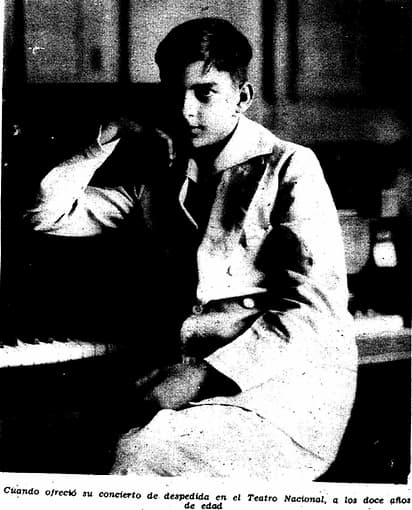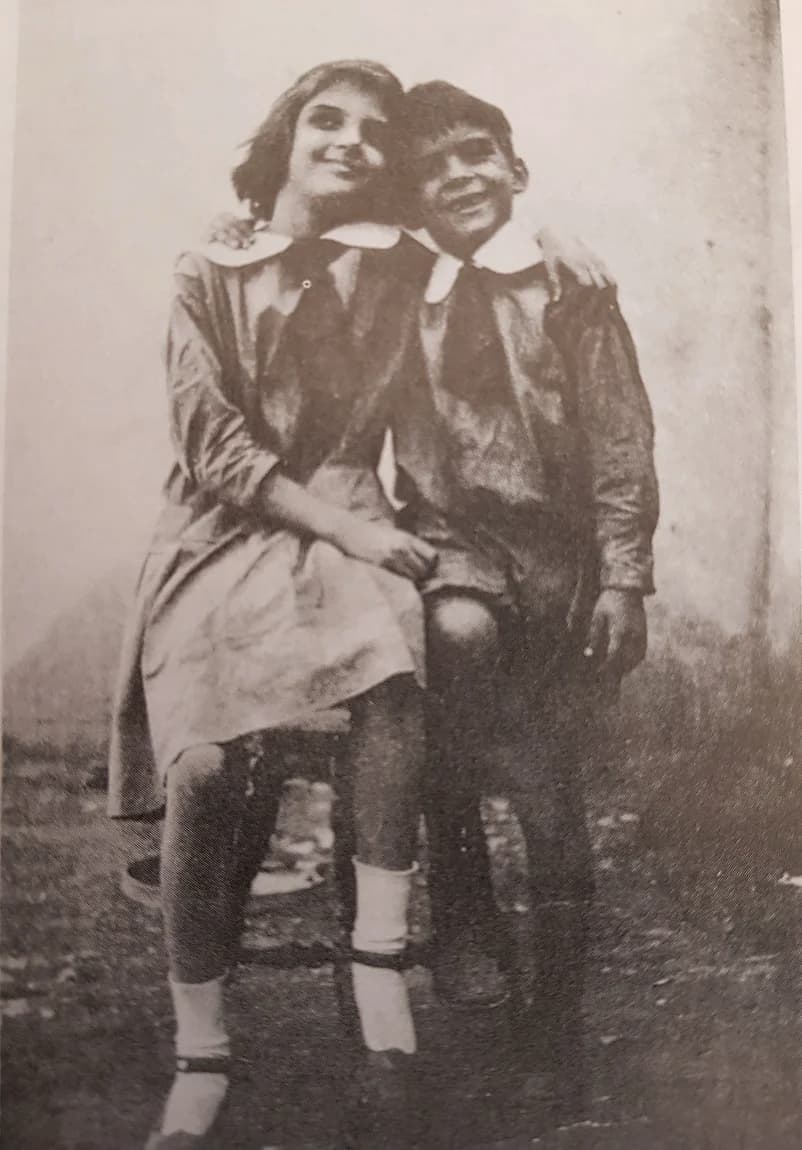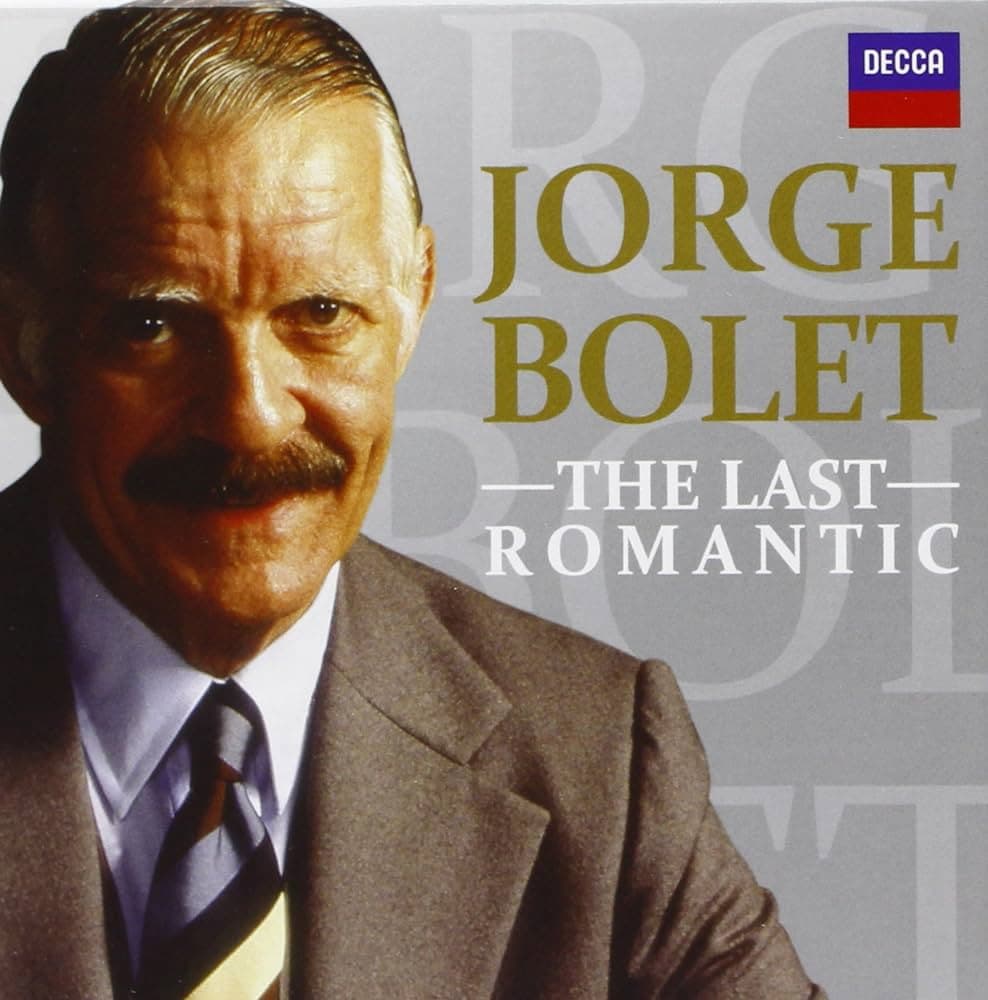The Cuban-born virtuoso Jorge Bolet (1914-1990) was one of the leading advocates of Romantic pianism. From his days as a child prodigy there never was a doubt about his phenomenal talent, as his technique ranked with that of any living pianist. Capable of drawing a rich and velvety sound from the instrument, Bolet allowed for delicate fluctuations of tempo, or as he called it “flexibility within the pulse of the music,” to create interpretations of great subtlety, refinement, elegance, and pure musicality.
Jorge Bolet Plays Liszt’s Mephisto-Waltz No. 1
Early Years

Jorge Bolet at the age of 12
Jorge Bolet was born on 15 November 1914 in El Cerro, one of the 15 municipalities in the city of Havana. Both parents were of Catalan descent, and neither had pronounced musical inclinations. Jorge was the fifth of six children, and his sister Maria Josefa would play a most important role in his initial musical education. Maria studied piano with Alberto Falcón, a graduate of the Paris Conservatoire who ran his own music school in Havana. Apparently, his mother reported that Jorge was an “unruly baby, but when he heard Maria play the piano, he became quiet immediately.”
Bolet famously explained in an interview, “when I was very young, probably the most important indication of what was to come was the fact that I had an extremely natural facility for anything mechanical at the keyboard. Because I was an extremely fast learner, I never felt the need, fortunately, to practice endless hours. Somehow I felt that I could learn in one hour what some of my classmates took four hours to accomplish.”
Robert Schumann: Carnaval, Op. 9 (Jorge Bolet, piano)
First Studies

Maria and Jorge Bolet
Apparently, at the age of five, Bolet heard the Swiss-American pianist Rudolf Ganz in a recital at the National Theatre in Havana. As he later remembered, “Well, that was my moment of decision. I vowed I’d be that man up there on that stage.” Apparently he also told a friend that Ganz “taught him that a pianist should have a moustache!” Shortly thereafter, Jorge began his piano studies with his sister Maria.
He described Maria as “a very talented young lady who must have taught me extremely well.” He also remembers that Maria used to stretch his hands, particularly the spaces between the fingers. “She would flatten the palm of the hand so as to stretch the hand from one end to the other.” According to Jorge, “he had a childhood like that of any other boy, there were no picturesque or striking episodes.”
Claude Debussy: Preludes, Book 1 (excerpts) (Jorge Bolet, piano)
Towards Curtis

Jorge Bolet
Around the age of 10, Bolet performed at the salon of Mrs. Amelia Hoskinson, who held a monthly gathering. Although Bolet can’t remember the exact choice of works, “it might have been a Chopin Etude or Waltz, or maybe a Beethoven sonata.” He also appeared with the Havana Sinfonica under Gonzalo Roig in Mozart’s Piano Concerto No. 20, and a review described him “as a talented 12 year old boy, whose Mozart playing was so clear; his marvellous ability coupled with his boyish grace touched the heart of the audience.”
At one of the Hoskinson salons, Amelia’s sister-in-law took special interest in young Bolet, and on her return to the United States contacted the newly founded Curtis Institute, with Josef Hofmann as director. As Jorge remembered, “Amelia wrote the Curtis Institute and received a catalogue and an audition blank and called my mother and told her that Jorge is going to Philadelphia for an audition.”
Frédéric Chopin: Ballade No. 4 in F Minor, Op. 52 (Jorge Bolet, piano)
Farewell Concert

Jorge Bolet: The Last Romantic
A special concert took place on 4 September 1927 at the Gran Teatro Nacional in Havana. The concert was billed as a benefit for the young Jorge Bolet, “so that with the receipts he can go to complete his piano studies in the US.” A number of artists performed in the first half, but the second half was all Jorge. He performed a Prelude by Bach, a Study by Henselt, and Impromptus by Chopin, a Waltz by Levitzki and Liszt’s Liebestraum. After the Allegro Appassionato by Saint-Saëns, the concert concluded with Weber’s Konzertstück with the Havana Symphony.
An earlier benefit concert had apparently been organised by María Jones de Castro, with whom Jorge also studied. In fact, de Castro would publish a treatise on playing the piano in 1957, and Bolet was invited to write the preface. “In my opinion,” he writes, “the secret of this admirable book is the fact that “the piano is played more with the mind than with the fingers.” In the event, Bolet was admitted to the Curtis Institute, and his teacher “David Saperton didn’t have to correct any purely mechanical aspects of my technique. He more or less took off from where I was. Apparently, at the age of twelve, I was very much on the right track.”
For more of the best in classical music, sign up for our E-Newsletter
